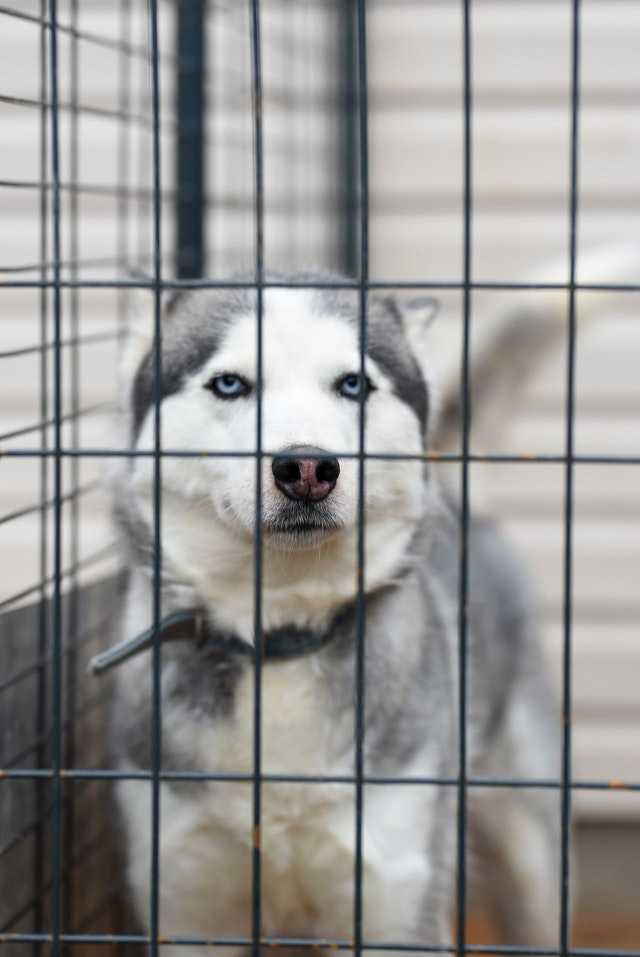How To Crate Train Your Dogs – Friendly Tips That Works

Crate training is a form of teaching your puppy or dog how to go outside and go potty.
When you are unable to supervise your dog, the crate is used to keep him contained.
Because most dogs do not urinate or defecate in the same place they sleep, when confined to its crate, your dog will most likely try to suppress the urge.
When used properly, a crate keeps your dog from developing the bad habit of having accidents in your house and provides it with a safe haven akin to a doggie sanctuary.
Crate training enables you to provide your dog with her own personal space within your home.
It would become your dog's comfortable home if you train her with courage and care.
.jpg)
A crate is also useful for protecting your puppy from potential dangers and teaching her manners for special events such as traveling, hosting dinner guests, or staying in a hotel.
Crate training is a popular method for general training, behavioral modification, and safety in dogs of all ages.
Remember that a dog can decide to come to look at the crate as a holdover to its forefathers' den, an area that is totally the dog's own and entirely safe if properly trained.
Crate training takes time with any dog, but it can take longer and be more difficult with a blind dog.
Finally, you can use a crate to create a safe haven for your blind dog and keep him secure and comfortable.
In this article, I will expose you to just 5 tips that work best for dog crate training.
Dog Crate Train Tip 1
Make your puppy's crate cozy and comfortable. Make the crate more appealing to your puppy in order to get him to use it.
The crate may appear intimidating or scary to your puppy at first, so add a comfortable blanket or a puppy toy to make it soft and inviting.
You can even include a sweatshirt of yours so they can smell like you.
.jpg)
It's a good idea for new puppy owners to request a cloth or small towel with the mother's scent on it as well.
By providing the puppy with a familiar and comforting scent, which research shows is very effective, can be very inviting and calming for them.
Dog Crate Train Tip 2
Establish a positive relationship with the crate.
Make sure you are in a positive frame of mind whenever you want your puppy to gain entry or use their crate.
Use a friendly tone of voice, offer some treats, and praise the dog to accomplish this.
When crate training a puppy, you can as well decide to create a positive connection by feeding the puppy in his crate with the door wide open.
This establishes a favorable relationship between food and the crate.
Dog Crate Train Tip 3
Cover your puppy’s crate. If a puppy can see their surroundings but not able to interact with them, the crate can easily cause anxiety.
These pets may whine, scratch, or bark at the crate.
If this makes it sound like your puppy, cover the crate with a blanket or sheet so your puppy can't see out.
Some companies sell specially designed dog crate covers for this purpose.
These dog crate covers are costly than the traditional sheet or blanket, but they help your puppy sleep by blocking out light.
.jpg)
Dog Crate Train Tip 4
Select the correct crate size. A dog will almost never go potty in the very same place where they sleep.
This rule is only broken if they have been required to hold it for too long, if they have an upset stomach or bladder infection, or if their dog's crate is too small (too large).
Also, if you go ahead to give your puppy an overly large crate, they will definitely look for a spot to sleep as well as a place to potty in the same space.
As a result, you should purchase a crate that is only big enough to sleep in.
The general rule is that your puppy should really be able to stand up and move around in their kennel, but not much more.
Dog Crate Train Tip 5
Avoid the crate as punishment. You've put in a lot of effort to teach your puppy to love her crate and consider it her home.
For the first few months, you'll want to keep up the games and practice.
It may be challenging to use her crate as a punishment if she becomes too rambunctious or misbehaves.
.jpg)
You can use it for time-outs after your puppy develops a fondness for her crate and can endure it for more than an hour.
However, trying to force your puppy into her crate or yelling at her to do so will make the crate a frightening environment for her.
Furthermore, rather than punishing the puppy for bad behavior, it's always better to tell her whatever you want her to do.
Remember that there are a hundred ways to make a mistake, but only one way to make a correct decision.
As a result, rewarding your puppy for habits you like will make training go faster and be less stressful.
And, if you don't like something, ignore it or prevent it.
Author Bio
Contributor comprises full-time and freelance writers that form an integral part of the Editorial team of Hubslides working on different stages of content writing and publishing with overall goals of enriching the readers' knowledge through research and publishing of quality content.
Article Comments
No Comments!
At present there are zero comments on this article.
Why not be the first to make a comment?
Similar Articles
Sponsor
Search Articles
Experts Column
Latest Articles
Featured Articles
Most Popular Articles












